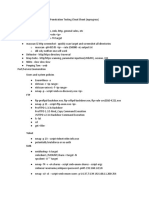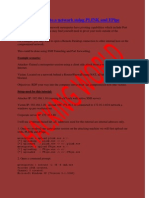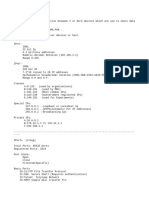0% found this document useful (0 votes)
33 views5 pagesDocument PDF
The document outlines a comprehensive risk management process, detailing steps from identifying and analyzing risks to evaluating and monitoring them. It also contrasts the roles of Red Team and Blue Team in cybersecurity, with Red Team focusing on offensive tactics and Blue Team on defense. Additionally, it provides technical commands and tools for penetration testing, file transfer, and privilege escalation in cybersecurity contexts.
Uploaded by
lokikarai1Copyright
© © All Rights Reserved
We take content rights seriously. If you suspect this is your content, claim it here.
Available Formats
Download as PDF, TXT or read online on Scribd
0% found this document useful (0 votes)
33 views5 pagesDocument PDF
The document outlines a comprehensive risk management process, detailing steps from identifying and analyzing risks to evaluating and monitoring them. It also contrasts the roles of Red Team and Blue Team in cybersecurity, with Red Team focusing on offensive tactics and Blue Team on defense. Additionally, it provides technical commands and tools for penetration testing, file transfer, and privilege escalation in cybersecurity contexts.
Uploaded by
lokikarai1Copyright
© © All Rights Reserved
We take content rights seriously. If you suspect this is your content, claim it here.
Available Formats
Download as PDF, TXT or read online on Scribd
/ 5













































































